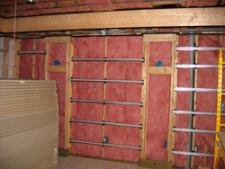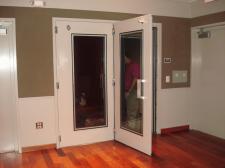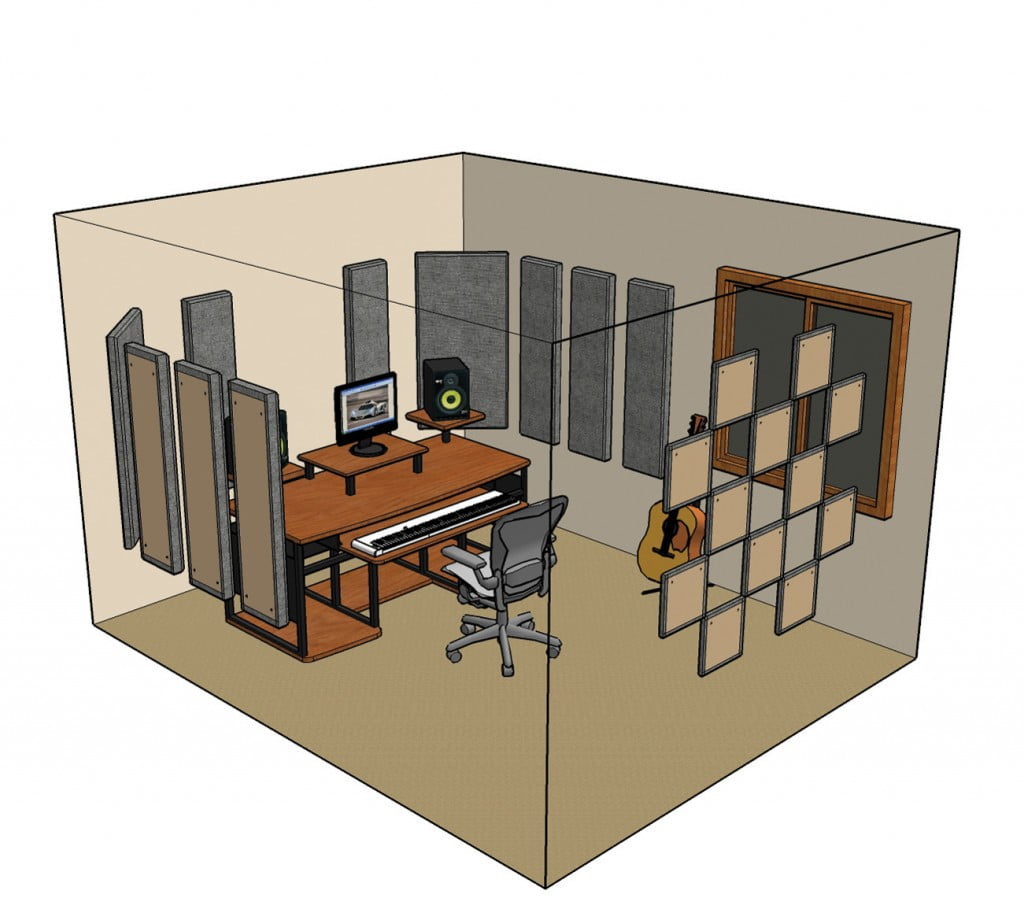It’s the time of year for saving money!
In this last installment of this series, we’ll tackle noise control. The ideal way to create a dedicated listening room in your home is to build one from scratch. However, since most people already have a room they wish to repurpose into a listening room, this article will focus on that scenario.
 Noise control will be your first challenge to tackle. People often ask me how to soundproof a room. Unfortunately, there is no such thing. Just like nothing is truly fireproof (everything burns at some temperature), nothing is truly soundproof. This is especially true in lower frequency ranges. Instead, industry experts refer to this as noise control, or sound conditioning.
Noise control will be your first challenge to tackle. People often ask me how to soundproof a room. Unfortunately, there is no such thing. Just like nothing is truly fireproof (everything burns at some temperature), nothing is truly soundproof. This is especially true in lower frequency ranges. Instead, industry experts refer to this as noise control, or sound conditioning.
In this article, I will discuss noise control techniques that will reduce the sound that bleeds to other rooms in your home. As a bonus, these methods will also give you better sound INSIDE the room as they help dampen low frequency standing waves.
In article one we covered dimensions that are best for your listening room. [Add link to article one.] Once your ideal room dimensions have been determined, work backwards to be sure the inside of your finished room conforms to those dimensions. For example, if you are using two layers of sheetrock and half inch resilient channel, take those measurements into consideration.
There are two types of dedicated listening rooms. Stand alone rooms and those that exist inside your house. Since the vast majority are inside the house, we’ll gear these recommendations towards that scenario. (If you have a stand-alone room, most methods can also be used with no need to decouple the room from existing rooms.)
To start, if your dedicated room shares walls with other rooms in your home, it’s best to decouple them by building a new wall a few inches away from the existing wall. This airspace is a wonderful way to mitigate sound transmission.
 Whether you can do this or not, the next step will be decoupling the bare studs from the sheetrock inside the room with damping material. The most common is resilient channel. The ASC ISO Wall system (https://www.acousticsciences.com/products/iso-wall-system) uses resilient channel with a damping material called WallDamp attached to the channel. This product, then a layer of sheetrock, then another thin layer of WallDamp, and a final layer of sheetrock will dampen the sound in the room. In addition to containing the sound within the room, this product also flexes to help dampen standing waves.
Whether you can do this or not, the next step will be decoupling the bare studs from the sheetrock inside the room with damping material. The most common is resilient channel. The ASC ISO Wall system (https://www.acousticsciences.com/products/iso-wall-system) uses resilient channel with a damping material called WallDamp attached to the channel. This product, then a layer of sheetrock, then another thin layer of WallDamp, and a final layer of sheetrock will dampen the sound in the room. In addition to containing the sound within the room, this product also flexes to help dampen standing waves.
There are other companies such as Acoustical Solutions that sell a wide array of damping clips and other isolating products to achieve a similar outcome (https://acousticalsolutions.com/product-category/vibration-control/).
It’s not always possible to tear off existing sheetrock and start at the studs. Sometimes just adding a second layer of sheetrock can be an effective way to stop some of the sound transmission from traveling room to room. If you choose this method, try to use a different thickness of sheetrock than is already on your wall. At two different thicknesses, the two materials will have different resonant frequencies. It’s important to use some sort of damping material between the layers of sheetrock, like WallDamp, mentioned above, or Green Glue (http://www.greengluecompany.com/).
 The final step to help you with noise control is sealing any openings in your room, such as doors, windows, electrical outlets, lighting fixtures, etc…Companies like Industrial Acoustics Inc. have great doors made specifically for noise control (http://www.iacacoustics.com/acoustic-doors.shtml). If this option is not in your budget, simply make sure the door is tight and well-sealed. The same goes for windows. Dual pane insulated glass is recommended. Caulk around fixtures such as lighting and electrical outlets, and your room will be complete. Following these steps will go a long way towards keeping both the listener and other members of the household happy!
The final step to help you with noise control is sealing any openings in your room, such as doors, windows, electrical outlets, lighting fixtures, etc…Companies like Industrial Acoustics Inc. have great doors made specifically for noise control (http://www.iacacoustics.com/acoustic-doors.shtml). If this option is not in your budget, simply make sure the door is tight and well-sealed. The same goes for windows. Dual pane insulated glass is recommended. Caulk around fixtures such as lighting and electrical outlets, and your room will be complete. Following these steps will go a long way towards keeping both the listener and other members of the household happy!
Christopher Klein has been designing and building high end acoustic treatments for listening rooms, studios, and home theatres since 1992. He has also been a professional musician since 1977.








